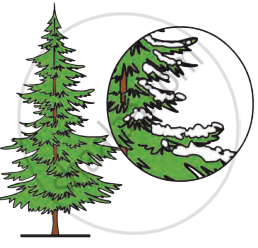Topics
Plant Life
The Leaf
- Root
- Types of Root
- Shoot System
- Stem
- The Structure of a Plant
- Types of Leaf
- Autotrophic Plants
- Insectivorous Plants
- Significance of Photosynthesis
- Transpiration
- Significance of Transpiration
- Modifications of Leaf
- Vegetative Reproduction
- Flower
The Flower
- Flower
- Structure of a Bisexual Flower
- Types of Flower
- Sexual Reproduction in Flowering Plants
- Pollination
- Self Pollination (Autogamy)
- Cross Pollination
- Agents of Pollination
- Fertilization Process
- Fruit
- The Seed
- Classification and Structure of Seeds
- Structure of a Dicotyledonous Seed
- Structure of Monocotyledonous Seed
- Formation of Seed and Fruit
- Germination in Some Common Seeds
The Cell
- Cell: Structural and Functional Unit of Life
- The Invention of the Microscope and the Discovery of Cell
- Organisms Show Variety in Cell Number, Shape and Size
- Cell Theory
- Plant Cell and Animal Cell
- Structure of the Cell
- Plasma Membrane
- Semi-permeable Membrane (Cell Membrane)
- Cell Wall - “Supporter and Protector”
- Cytoplasm - “Area of Movement”
- Nucleus - “Brain” of the Cell
- Plastids
- Non-living Substances Or Cell Inclusion
- Cell Division: an Essential Life Process
- Protoplasm
Human Body
Digestive System
- Food and Its Types
- Nutrients and Nutrition
- Component of Food
- Human Digestive System
- The Mouth and Buccal Cavity
- The Teeth and Its Structure
- Tongue
- The Salivary Glands
- The Food Pipe/Oesophagus
- The Stomach
- The Small Intestine
- Liver
- Pancreas
- Absorption of Food
- The Large Intestine
- Assimilation of Food
- The Aching Tooth
- Oral Health
Respiratory System
Circulatory System
- Blood Circulatory System in Human
- Blood
- Composition of Blood: Plasma (The Liquid Portion of Blood)
- Composition of Blood: Red Blood Cells (Erythrocytes)
- Composition of Blood: White Blood Cells (Leukocytes)
- Composition of Blood: Blood Platelets (Thrombocytes)
- Functions of Blood
- Human Heart
- Blood Vessels
- Circulation of Blood in the Heart (Functioning of Heart)
- Types of Closed Circulation
- Heart Beat - Heart Sounds "LUBB" and "DUP"
- Blood Pressure (B.P.)
- Blood Transfusion and Blood Groups (ABO and Rh system)
- Keeping the Heart Healthy
Health and Hygiene
Habitat and Adaptation
- Habitat
- Adaptations and Its Types
- Adaptations of Plants
- Adaptation in Aquatic Plants (Hydrophytes)
- Adaptation in Desert Plants (Xerophytes)
- Adaptation in plants of snowy regions
- Adaptations in Seeds for Transport Through Air
- Adaptation in Animals
- Adaptation in Aquatic Animals
- Adaptation in Desert Animals
- Adaptation in Mountain Animal
- Adaptation in Aerial Animals
Adaptation in plants of snowy regions:
Plants in snowy regions, like pine and deodar trees, have a cone-like shape with sloping branches. This helps the snow slide off easily, preventing the weight of snow from breaking the branches.
- The branches of these trees are slanted downward, which helps in shedding snow and avoiding damage due to heavy snowfall.
- These trees have thick bark that acts as insulation, helping the tree withstand extremely cold temperatures.
- The leaves of conifers are shaped like needles, which reduce water loss and help the plant survive the cold, dry air.

Deodar tree
If you would like to contribute notes or other learning material, please submit them using the button below.
